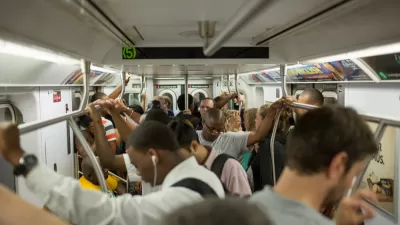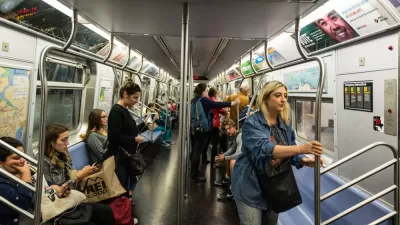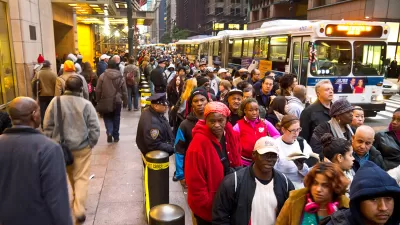Increasing ridership, coupled with decreasing service, means a very crowded subway system in New York City.

"The Metropolitan Transportation Authority hasn’t been able to run enough trains to keep up with a growing number of riders," according to an article by Andrew Tangel.
The subway carried 1.76 billion riders last year, a 12% increase since 2009, when the last recession ended, according to the MTA. At the same time, Federal Transit Administration data show subway trains ran 345.4 million miles in passenger service last year, down 2% from 2009.
Tangel quotes Peter Cafiero, chief of operations planning for the MTA’s New York City Transit division, for the story, to describe a subway system that is completely constrained by technology and infrastructure limitations. Tangel notes that switching to an advanced signal system (i.e., communications-based train control) "will likely take decades and cost billions of dollars," though it would also "allow the MTA to safely run more trains an hour."
FULL STORY: New York’s Subway System Can’t Keep Pace With Growing Number of Riders

Planetizen Federal Action Tracker
A weekly monitor of how Trump’s orders and actions are impacting planners and planning in America.

Restaurant Patios Were a Pandemic Win — Why Were They so Hard to Keep?
Social distancing requirements and changes in travel patterns prompted cities to pilot new uses for street and sidewalk space. Then it got complicated.

Maui's Vacation Rental Debate Turns Ugly
Verbal attacks, misinformation campaigns and fistfights plague a high-stakes debate to convert thousands of vacation rentals into long-term housing.

In California Battle of Housing vs. Environment, Housing Just Won
A new state law significantly limits the power of CEQA, an environmental review law that served as a powerful tool for blocking new development.

Boulder Eliminates Parking Minimums Citywide
Officials estimate the cost of building a single underground parking space at up to $100,000.

Orange County, Florida Adopts Largest US “Sprawl Repair” Code
The ‘Orange Code’ seeks to rectify decades of sprawl-inducing, car-oriented development.
Urban Design for Planners 1: Software Tools
This six-course series explores essential urban design concepts using open source software and equips planners with the tools they need to participate fully in the urban design process.
Planning for Universal Design
Learn the tools for implementing Universal Design in planning regulations.
Heyer Gruel & Associates PA
JM Goldson LLC
Custer County Colorado
City of Camden Redevelopment Agency
City of Astoria
Transportation Research & Education Center (TREC) at Portland State University
Camden Redevelopment Agency
City of Claremont
Municipality of Princeton (NJ)





























